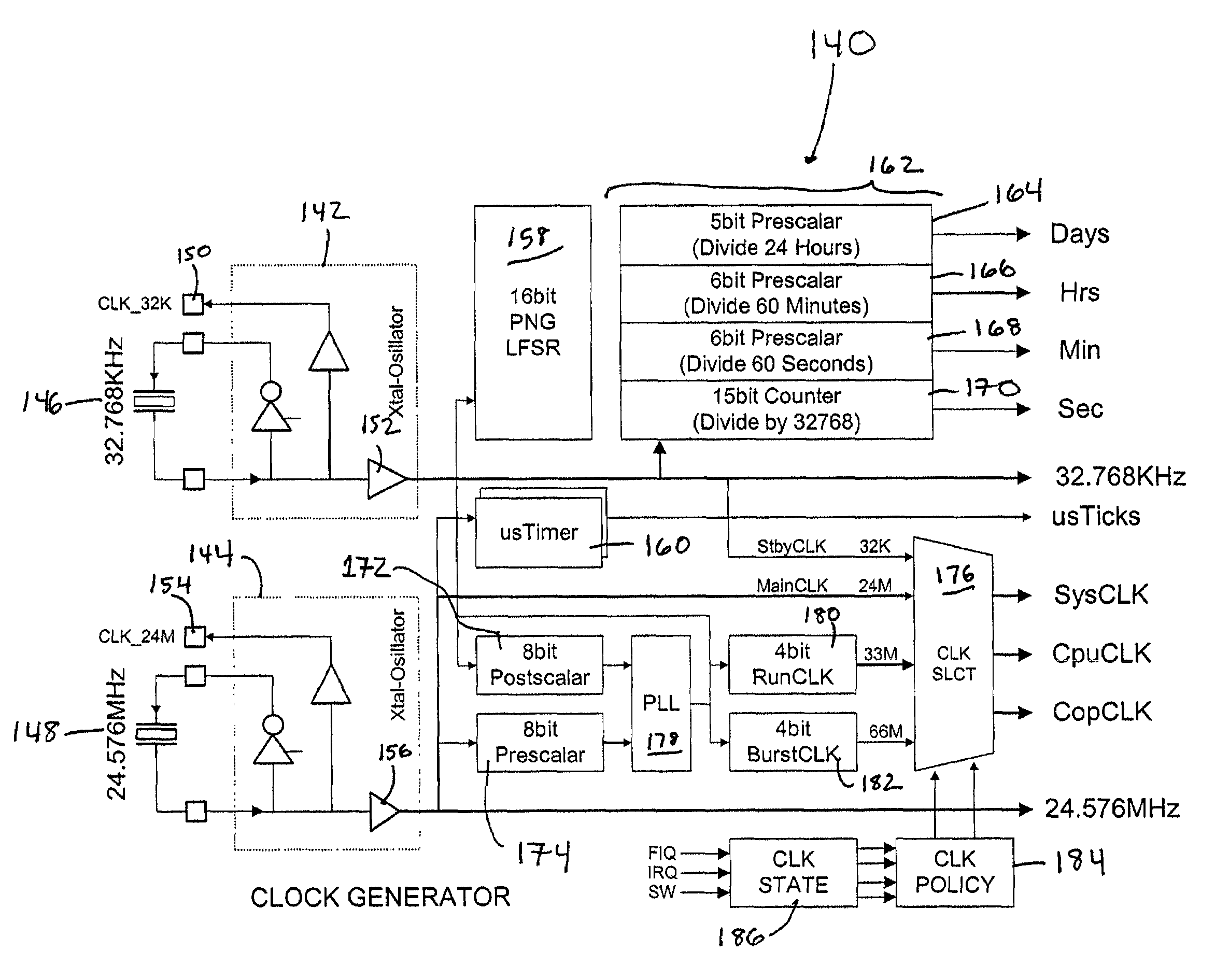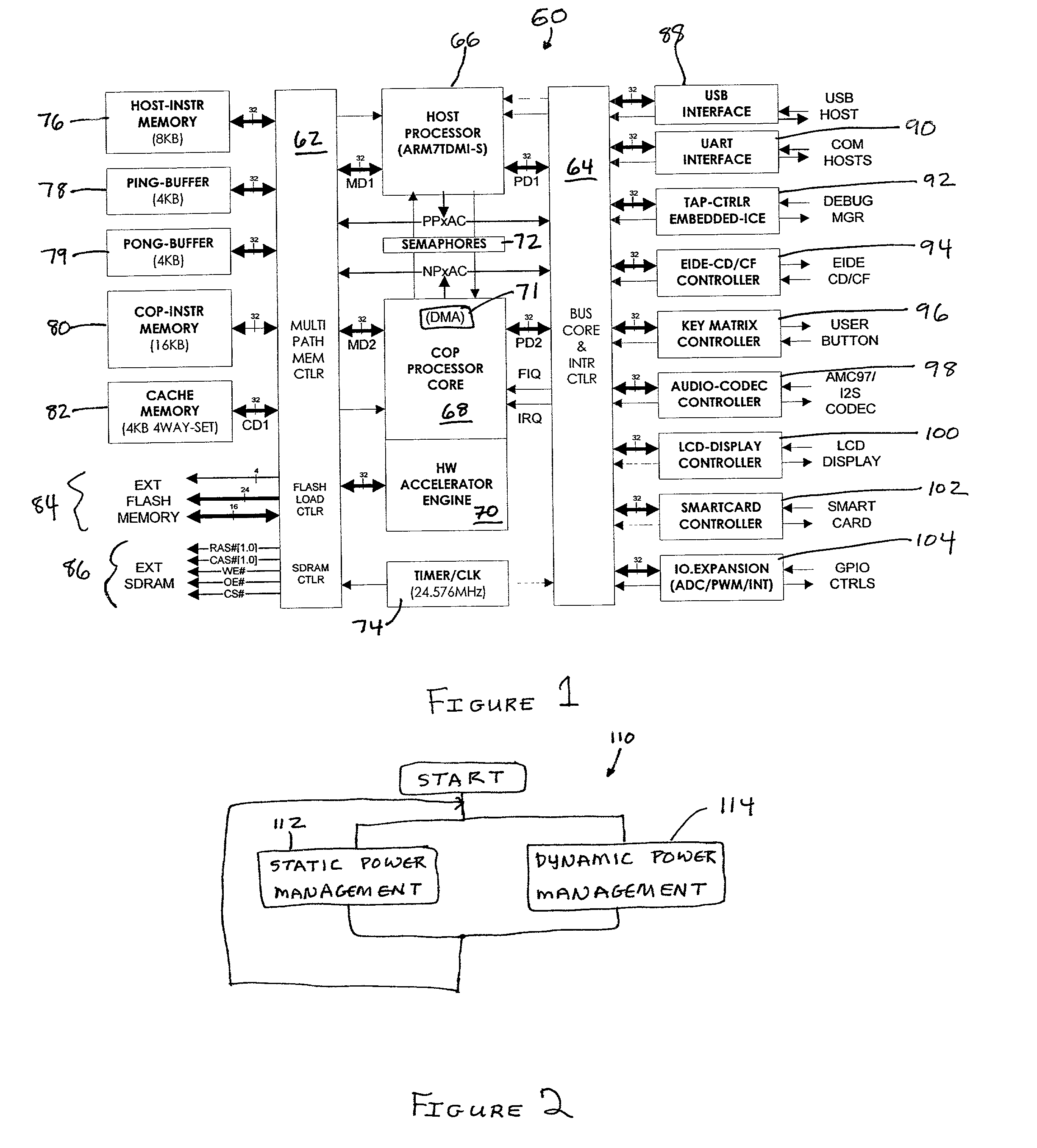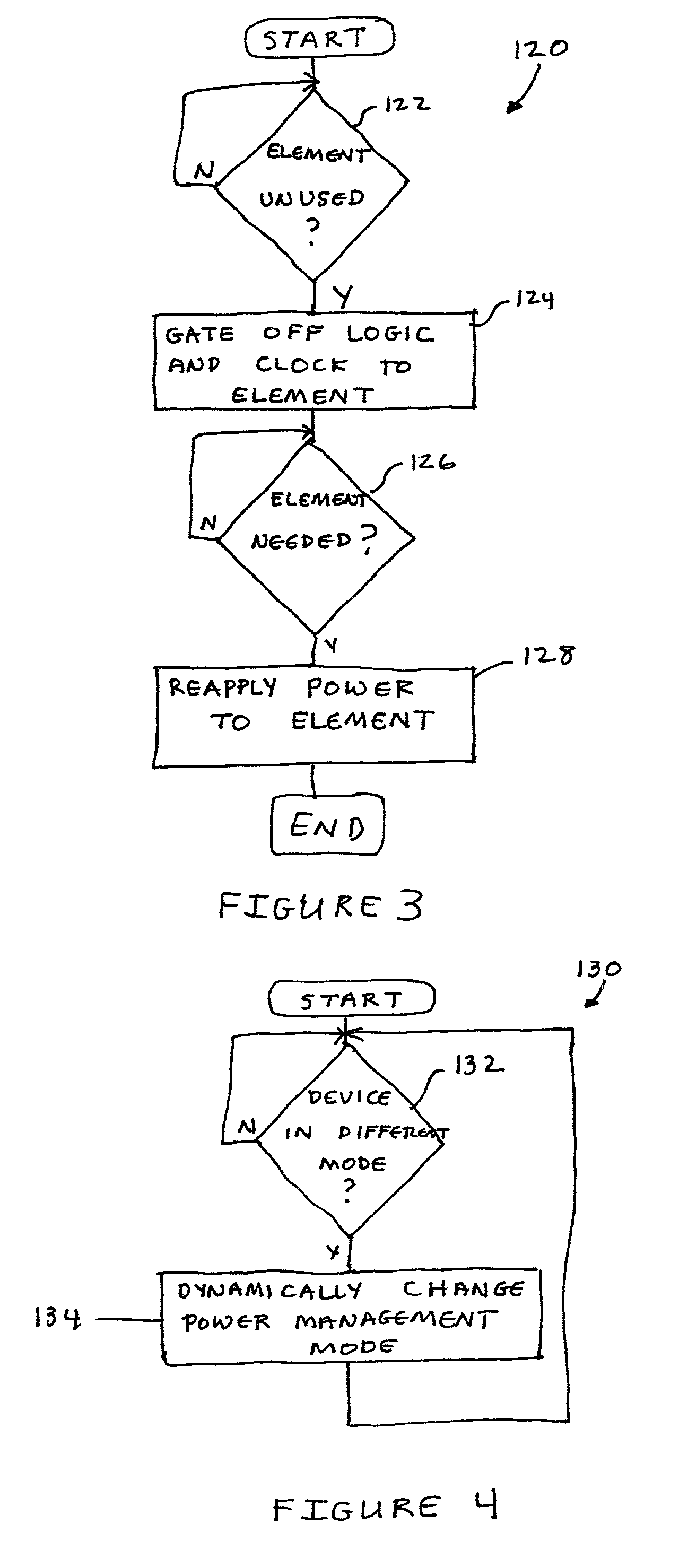Dynamic power management of devices in computer system by selecting clock generator output based on a current state and programmable policies
a technology of dynamic power management and computer system, applied in static indicating devices, generating/distributing signals, instruments, etc., can solve the problems of critical power conservation, impaired performance of portable electronic devices, and power conservation during computer system operation, so as to minimize the total power consumed by portable electronic devices and maximize the battery life of portable electronic devices
- Summary
- Abstract
- Description
- Claims
- Application Information
AI Technical Summary
Benefits of technology
Problems solved by technology
Method used
Image
Examples
Embodiment Construction
[0021]The invention is particularly applicable to a portable digital music device and it is in this context that the invention will be described. It will be appreciated, however, that the power management system and method in accordance with the invention has greater utility, such as to any other electronic device that desirably needs to reduce the power consumption of the device and especially to any limited power source devices, such as battery powered devices, rechargeable battery powered devices and the like, where it is very desirable to reduce the power consumption of the device. Now, a preferred embodiment of a portable electronic device which is a portable digital music system will be described to provide context for the invention since the invention is applicable to many different electronic systems.
[0022]FIG. 1 is a diagram illustrating a preferred embodiment of a portable electronic device 60, such as a portable digital music system, that may include the power management ...
PUM
 Login to View More
Login to View More Abstract
Description
Claims
Application Information
 Login to View More
Login to View More - R&D
- Intellectual Property
- Life Sciences
- Materials
- Tech Scout
- Unparalleled Data Quality
- Higher Quality Content
- 60% Fewer Hallucinations
Browse by: Latest US Patents, China's latest patents, Technical Efficacy Thesaurus, Application Domain, Technology Topic, Popular Technical Reports.
© 2025 PatSnap. All rights reserved.Legal|Privacy policy|Modern Slavery Act Transparency Statement|Sitemap|About US| Contact US: help@patsnap.com



